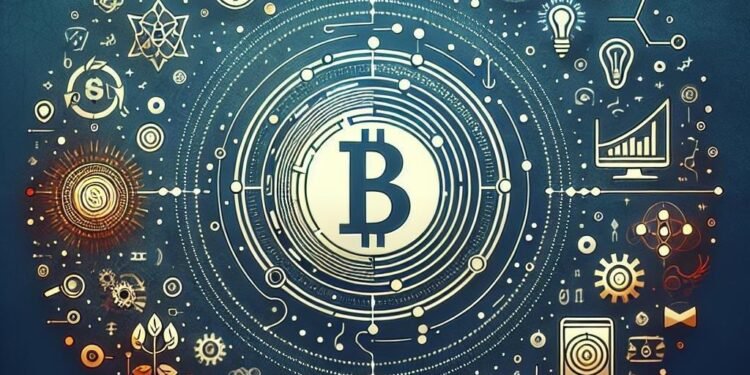
Da li centralne banke planiraju regulaciju stablecoins?
„`html
Stablecoins and the Dollar: Allies or Adversaries in the New Financial Era?

As Americans gear up for the elections, the digital dollar comes back into focus. What roles will a CBDC and stablecoins play in shaping the future of the US economy?
Uvod u Stablecoine i Američki Dolar
U proteklim godinama, svet finansija doživljava transformaciju zahvaljujući razvoju digitalne ekonomije i rastućoj popularnosti kriptovaluta. Među ključnim igračima na ovoj sceni su stablecoin-i, digitalna sredstva čija je vrednost vezana za stabilnu imovinu, poput američkog dolara (USD). Vinceći popularnost stablecoina izaziva pitanje: da li su stablecoins saveznici ili rivali američkom dolaru u ovoj novoj finansijskoj eri?
Stablecoini su dizajnirani da ponude stabilnost u svetu visokorizičnih kriptovaluta, čija se vrednost često drastično menja. Stabilnost, naravno, dolazi iz vezivanja za „tradicionalne“ kuće vrednosti poput američkog dolara, evra, zlata ili drugih stabilnih klasa imovine.
Šta su Stablecoin-i?
Stablecoin je vrsta kriptovalute, ali za razliku od volatilnijih kriptovaluta poput Bitcoina (BTC) i Ethereuma (ETH), stablecoin obezbeđuje stabilniju vrednost vezujući se za tradicionalne valutne standarde. Ovo može uključivati vezivanje za fiat valutu poput dolara, imovinu kao što je zlato ili pak druge kriptovalute. Stablecoini se najčešće koriste za transakcije, čuvanje vrednosti ili kao prelazna forma između fiat i kripto sveta.
Stablecoini se obično dele u četiri glavne kategorije:
- Fiat-collateralized stablecoini (vezani za fiat, poput USDT ili USDC)
- Crypto-collateralized stablecoini (kolaterizovani kroz druge kriptovalute)
- Commodity-backed stablecoini (podržani fizičkim robama, poput zlata)
- Algorithmic stablecoini (koji zavise od softverskih protokola za održavanje stabilnosti)
Kriptovalute i Digitalni Dolar: Ekosistem se Počinje Menjati
S porastom stablecoina kao što su USDT (Tether) i USDC (USD Coin), potrebno je razmotriti kako američki dolar, sve više i sam digitalizovan kroz spekulacije o Central Bank Digital Currency (CBDC), odgovara na nove izazove. Digitalni dolar bi mogao promeniti način na koji Amerikanci posluju, štedljivost, pa čak i monetarnu politiku FDA.
CBDC-i (Digitalne valute centralnih banaka) su digitalna verzija fiat novca, koji bi emitovala i kontrolisala centralna banka. Mada stablecoin-i ne stoje direktno nasuprot njima, ipak stabilnost, transparentnost i brzina kojom bi digitalni dolar mogao da funkcioniše, unosi novu dinamiku u ovaj prostor.
Allies ili Adversaries? Odnos Stablecoins i Dolar
Odgovor na pitanje da li su stablecoin-i i dolar protivnici zavisi od perspektive. Prema nekim analitičarima, stablecoin-i mogu biti saveznici dolara. Ove digitalne valute koriste se kao zamena za lokalne valute u nestabilnim ekonomijama, gde građani biraju stablecoin-e vezen za američki dolar kako bi zaštitili svoju štednju. To, zauzvrat, širi globalnu upotrebu američkog dolara, čak i u digitalnom obliku.
Saveznik dolara?
- Stabilnost: Stablecoini pomažu ljudima u nestabilnim ekonomijima da pristupe sigurnijoj valuti – dolar u digitalnom obliku.
- Globalna dominacija dolara: Stablecoin-i mogu dalje osnažiti dominaciju američkog dolara na globalnoj sceni jer većina njih koristi USD kao referencu.
- Povećana upotreba kriptovaluta: Stablecoini mogu olakšati uvod u digitalno finansiranje bez rizika volatilnosti koju vidimo kod drugih altcoina.
Suprotstavljen dolaru?
S druge strane, mnogi veruju da uvođenje stablecoina ugrožava suverenitet centralnih banaka i njihovih valuta. Stablecoini, sami po sebi, stvaraju konkurenciju tradicionalnim bankama da generišu profit kroz transakcijske naknade.
- Regulativni izazovi: Dobro regulisani stablecoin-i mogu sprečiti digitalni novac centralnih banaka da zavlada, dajući stabilnu alternativu.
- Bankarske usluge bez banke: Stablecoini mogu sprečiti tradicionalne banke da zadrže potpunu kontrolu nad finansijskim sistemima jer sve veći broj korisnika prelazi na „bez-banke“ opcije.
Prednosti Stablecoina u Savremenom Finansijskom Sistemu
Generalno govoreći, stablecoini nude niz prednosti, kako za potrošače, tako i za poslovne subjekte:
| Prednost | Opis |
|---|---|
| Brzina | Transakcije stablecoin-ima obično su brže nego tradicionalni bankovni transferi, što olakšava brzu razmenu sredstava u globalnom okruženju. |
| Pristupačnost | Ljudi koji nemaju pristup bankarskim uslugama mogu koristiti stablecoin novčanike kako bi obavljali svoje transakcije. |
| Manje volatilnosti | Za razliku od drugih kriptovaluta, stablecoin-i nude sigurniju, stabilniju vrednost. |
| Globalna upotreba | Stablecoini omogućavaju ljudima da lako posluju preko državnih granica bez potrebe za kursnim razlikama. |
Regulacija Stablecoina i Budućnost Fintech-a
Dok stablecoin-i doživljavaju nagli rast širom sveta, institucije poput U.S. Treasury i Securities and Exchange Commission (SEC) pažljivo ispituju kako da regulišu i kontrolišu ovaj digitalno-finansijski fenomen. Pitanja regulacije, kao što su transparentnost, rezervacije imovine i operativnost sa centralnim bankama, i dalje izazivaju debate.
Nepravilna regulacija ili nedostatak iste može destabilizovati finansijski sistem. S druge strane, dobro osmišljeni okviri mogu dozvoliti stablecoin-ima da rade kao korisni alati, korisni za čitav finansijski sistem.
CBDC vs. Stablecoins: Kakva je Budućnost?
Budućnost globalnog finansijskog sistema verovatno će biti mešavina digitalnog dolara i stablecoin-a. Stabilnost dolara, zajedno sa fleksibilnošću stablecoin-a, mogla bi stvoriti koherentniji i transparentniji finansijski ekosistem.
Međutim, uloga centralnih digitalnih valuta u velikoj meri zavisi od politike i korporativnih interesa, kao i od brzine inovacija u blockchain tehnologiji. CBDC-i nude potencijal da digitalizuju monetarni svet na globalnoj sceni, ali stablecoin-i već pokazuju svoju sposobnost da unaprede svakodnevne transakcije.
Introduction to Stablecoins and the U.S. DollarStablecoins are digital assets pegged to stable external values, most notably fiat currencies like the US Dollar (USD). Their appeal in the financial world lies in providing a bridge between the volatile nature of cryptocurrencies and the stability of fiat currencies. The rise in popularity of stablecoins, especially in speculative economies, has sparked debate: Are stablecoins reinforcing or threatening the dominance of the US dollar?
What Are Stablecoins?
Stablecoins are a category of cryptocurrency designed to mitigate volatility by tying their value to traditional assets such as fiat currencies or commodities (gold, for instance). They are broadly categorized into four types:
- Fiat-Collateralized: Backed by fiat currency reserves (e.g., USDT, USDC).
- Crypto-Collateralized: Backed by other cryptocurrencies.
- Commodity-Collateralized: Pegged to physical assets like gold.
- Algorithmic: Rely on protocols and algorithms without direct backing by physical assets.
Their most common use cases include facilitating digital transactions, providing a store of value, and serving as a medium for moving from the fiat to crypto space and vice versa.
Crypto and the Digital Dollar: A Changing Ecosystem
Stablecoins such as USDT and USDC have grown in usage, but the concept of a CBDC, especially a digital US dollar, is gaining momentum. A CBDC would represent a digital version of traditional fiat money, issued and regulated by the Federal Reserve or another relevant national authority. The rise of digital dollars alongside stablecoins could offer revolutionary changes in how people save, transact, and even in federal monetary policies.
A CBDC could offer guaranteed stability, enhanced transparency, and faster transactions, but stablecoins, with their wide adoption, may continue competing in certain aspects.
Allies or Adversaries? The Relationship Between Stablecoins and the Dollar
The overarching theme of whether stablecoins are allies or adversaries to the dollar is nuanced. Analysts argue that stablecoins may act as allies by expanding the utility and global reach of the US dollar, particularly in economies grappling with uncertain local currencies, where stablecoins pegged to the dollar serve as a refuge for citizens and businesses.
Allies of the Dollar?
- Stability: Stablecoins offer individuals in volatile economies access to a stable currency — often the US dollar in digital form.
- Global Dollar Dominance: The pegging of stablecoins to USD further entrenches the dollar’s position as the dominant global currency.
- Simplified Use of Crypto: Stablecoins lower the barrier for people entering the crypto space by minimizing exposure to volatility.
Opponents of the Dollar?
Conversely, some argue that stablecoins challenge the sovereignty of central banks and traditional financial institutions. They remove some control from banks by allowing financial transactions to occur independently of centralized banks tasked with minting and regulating local currency.
- Regulatory Challenges: Lax or insufficient regulation around stablecoins could pose risks to national financial systems by undermining the need for government-issued digital currencies.
- Banking Alternatives: Stablecoins and other non-banking digital currencies could lead to an erosion of the traditional banking system, as consumers switch to „bankless“ alternatives.
Advantages of Stablecoins in the Modern Financial System
Stablecoins offer several significant advantages in day-to-day financial operations:
| Advantage | Description |
|——————–|————————————————————————————————————————————————–|
| Speed | Transactions using stablecoins are considerably faster than traditional bank transfers, facilitating swift global payments. |
| Accessibility | Those lacking access to formal banking services can use stablecoin wallets to store and transfer money. |
| Reduced Volatility | Unlike other cryptocurrencies, stablecoins maintain their value, offering a safer haven in contrast to highly volatile assets like Bitcoin. |
| Global Usage | Stablecoins enable cross-border transactions without the need for foreign exchange calculations and conversion fees. |
Regulation of Stablecoins and the Future of Fintech
As stablecoins grow in prominence, financial regulators, including the U.S. Treasury and the Securities and Exchange Commission (SEC), are increasingly scrutinizing their networks and operations. The right regulatory frameworks can provide credible oversight without stifling innovation, ensuring that these digital assets integrate harmoniously into the established financial ecosystem. Regulation of stablecoins would largely center around asset reserves, transaction transparency, and operational coherence with existing banking infrastructures.
If proper regulations are enacted, stablecoins could function optimally within the financial system, promoting stability and trust. Without it, stablecoins risk destabilizing broader financial ecosystems due to opaque operations and inadequate asset reserves.
CBDC vs. Stablecoins: What Does the Future Hold?
The future of global finance is likely to be a hybrid model, with both CBDCs and stablecoins playing prominent roles. While CBDCs offer the promise of an official digital monetary system backed by governments, stablecoins provide greater flexibility, widespread adoption, and an existing foothold in the cryptocurrency ecosystem. Together, these systems could create a more integrated and transparent global financial ecosystem.
However, the trajectory will depend heavily on political decisions, corporate involvement, and the pace of blockchain innovation. CBDCs could potentially digitize entire economies, but stablecoins have already demonstrated the capacity to power daily financial activities, even in volatile markets.
Conclusion
stablecoins and the US dollar are both poised to shape the financial ecosystem of the future, but whether they do so in harmony or in opposition remains to be seen. Stablecoins might well complement the dollar by expanding its reach, while CBDC could serve as a regulated evolution of fiat currency, bringing transparency and efficiency to monetary systems worldwide.

















































